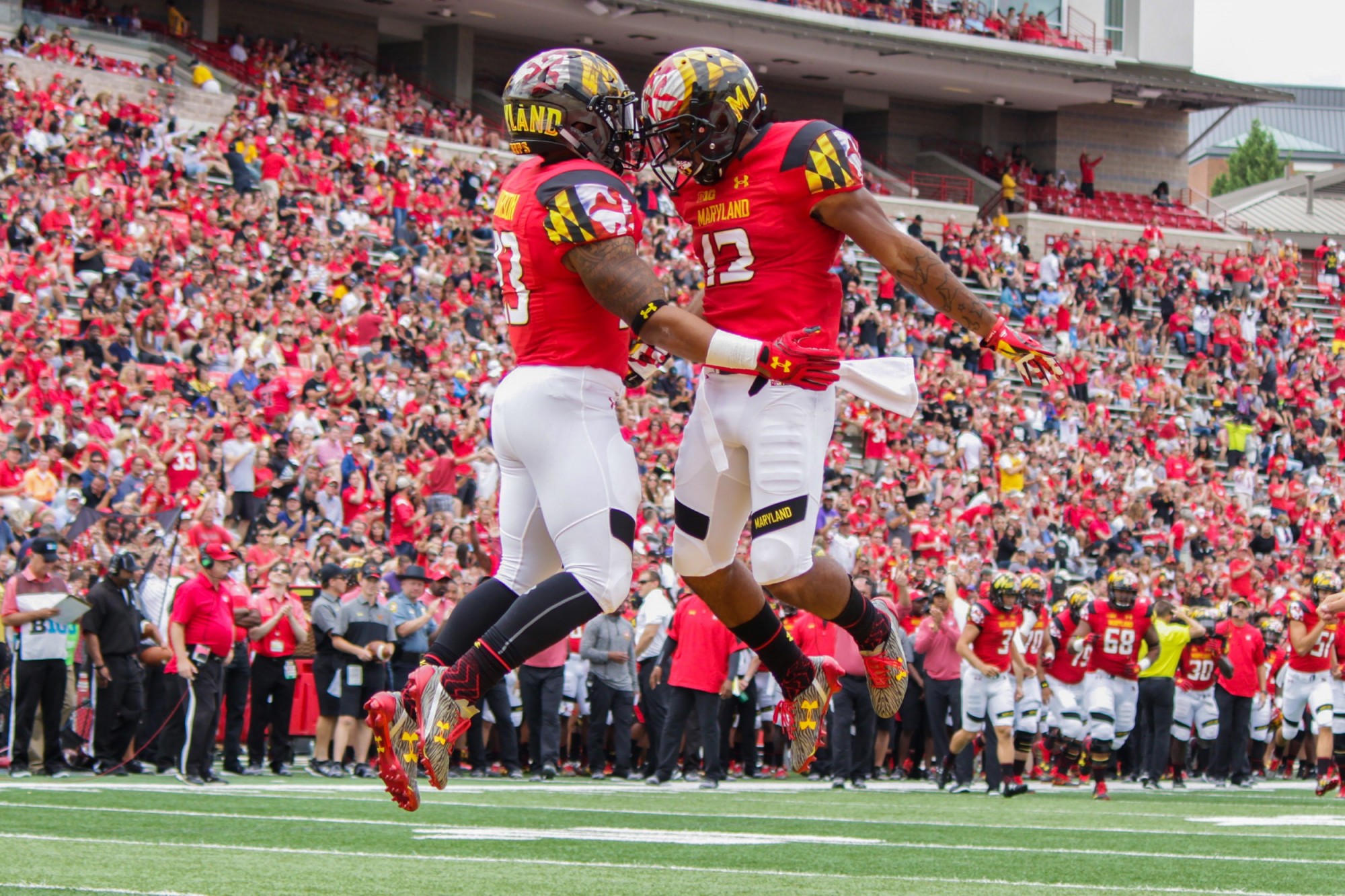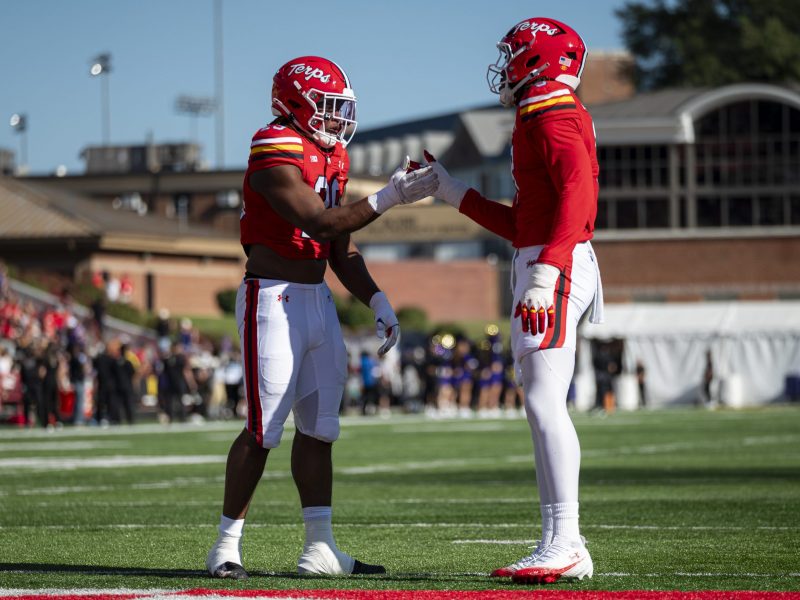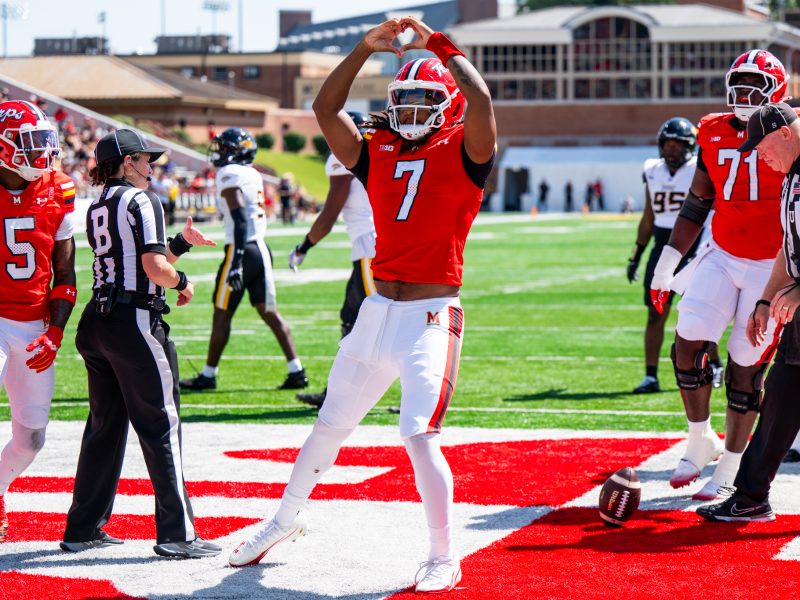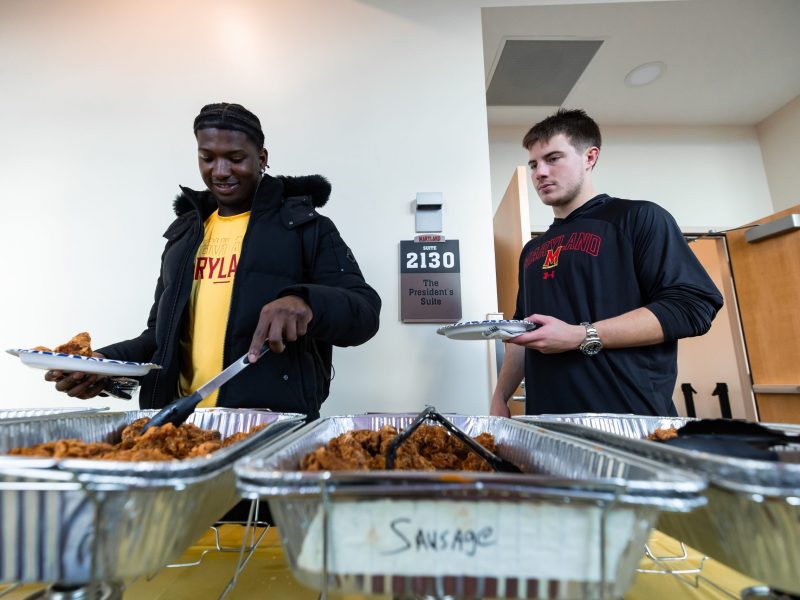Maryland football team’s nonconference slate is over, and the schedule affords the undefeated Terps a bye week before they open Big Ten play at home Oct. 1 against Purdue.
But before coach DJ Durkin’s bunch returns to the field, let’s evaluate how the Terps have performed thus far under their first-year coach.
Record: 3-0
Wins:
Howard (52-13), Florida International (41-14) and Central Florida (30-24, 2OT)
Quarterbacks: B+
Much of the Terps’ struggles from their 3-9 record last season came from under center, where quarterbacks Perry Hills and Caleb Rowe switched off throwing passes to opposing defenses. The duo combined to throw 28 interceptions, five more than the second-worst FBS team (UCF) in 2015. This season, the Terps new coaching staff supported Hills — who threw 13 picks a year ago — and the redshirt senior has protected the ball to lead one of three offenses in the nation that hasn’t commit a turnover. Freshman signal-caller Tyrrell Pigrome has shown flashes of potential, most recently his game-winning touchdown against UCF.
Running Backs: A-
The Terps entered the year needing a replacement for Brandon Ross, the team’s starting running back and leading rusher in 2015. That hasn’t been an issue, as returning players have combined with newcomers to produce the nation’s 13th-best rushing offense (266.7 yards per game). Ty Johnson starts in the backfield, but freshman Lorenzo Harrison been the most effective back through three games. The unit, which also features Virginia Tech transfer Trey Edmunds, could strengthen with Wes Brown returning from a three-game suspension, which stemmed from an indefinite ban last November.
Wide Receivers: C+
Aside from wide receiver D.J. Moore’s career game against Florida International — he caught six balls for 147 yards and two touchdowns — the receiving corps has been quiet. Hills threw less than 20 times in wins over Howard and FIU as Maryland compiled more than 40 rushes in each contest. The effects of the Terps’ infrequent passing game showed against Central Florida, as Hills completed 10 of his 23 passing attempts. One of those incompletions came on wide receiver Malcolm Culmer’s drop of what would have been a touchdown against UCF. This unit is more experienced than last year but reached its potential yet.
Offensive Line: B
Maryland’s offensive line has fared well up front after losing three starters from last year’s group. The stability starts with center Brendan Moore, who made the watch list for the Rimington Trophy, given to the nation’s best center. Former walk-ons Mike Minter and Maurice Shelton join Moore, along with returning starters Michael Dunn and Damian Prince. While the offensive line has helped the Terps achieve some impressive rushing numbers, their pass protection faltered last Saturday. The Knights generated pressure and sacked Hills five times.
Defensive Line: B-
First-year defensive line coach Mike London had to deal with the loss of two NFL draft picks — Yannick Ngakoue and Quinton Jefferson — but he’s had players emerge next to defensive end Roman Braglio in the Terps 3-4 scheme. After playing behind defensive tackle Azubuike Ukandu, Kingsley Opara has “really impressed” first-year defensive coordinator Andy Buh with his play inside. Cavon Walker has also stepped in as a starter. Aside from when the Terps allowed FIU to compile 5.1 yards per carry, the defensive line has done a solid job stopping the run.
Linebackers – B+
Jermaine Carter Jr., who ranks second on the team in tackles, transformed his body this offseason and was named to the watch list for the Butkus Award, an honor given to the top linebackers in high school, college and professional football. Shane Cockerille, the only player who ranks ahead of Carter in tackles, has thrived in the middle after playing quarterback and fullback the past two seasons. Add in Jesse Aniebonam and Melvin Keihn, who sat out last season after transferring from Virginia Tech, and Maryland has a formidable linebacker corps, which will improve with more experience.
Defensive Backs: A-
Entering the season, the defensive position group with the most uncertainty was the secondary. The Terps lost three starters, including Pittsburgh Steelers safety Sean Davis, and Will Likely was the lone returner. So far so good for Maryland, which has relied on safeties Darnell Savage Jr. and Denzel Conyers to join Likely and cornerback JC Jackson. A high-profile transfer, Jackson sat out against Howard for academic reasons but has played the past two games. The Terps may not be as fortunate with Conyers, who left the UCF game with an injury.
Special Teams: B-
Punter Wade Lees, the 28-year-old freshman from Australia, has been solid. Against Howard, running back Trey Edmunds scored off a blocked punt, the first time a player has done so for the Terps since 2014. The issue on special teams has been the kicking situation, as kicker Adam Greene has made four of his six field goals this season. His distance has been good, so Durkin expects the junior to straighten out his kicks in Big Ten play.
Coaching: A
The Terps were coming off a 3-9 season, the first time in three years the program didn’t make a bowl game. They fired their coach midseason and after the season brought in someone without any head coaching experience. In his first three games, Durkin and the rest of the new coaching staff have taken the necessary measures to rejuvenate the fan base. They brought a new intensity. They put together a forgettable nonconference schedule, allowing the Terps to gain confidence before the Big Ten slate. The Terps will likely suffer more blowout losses than wins in Big Ten play, but right now, Durkin has Maryland fans excited about this bunch. And just wait for the Terps’ incoming recruits.



